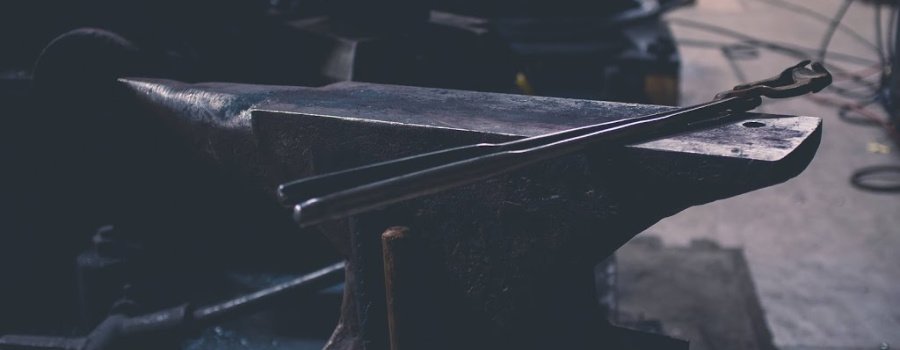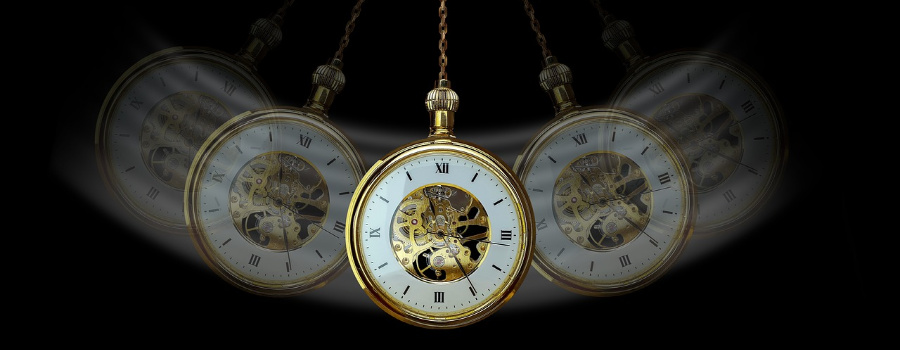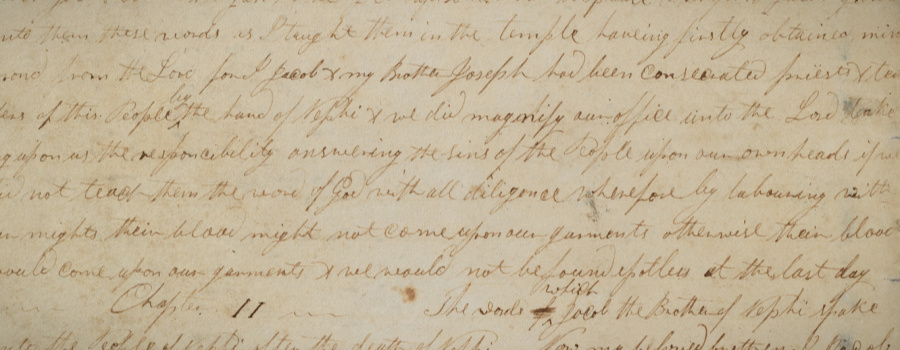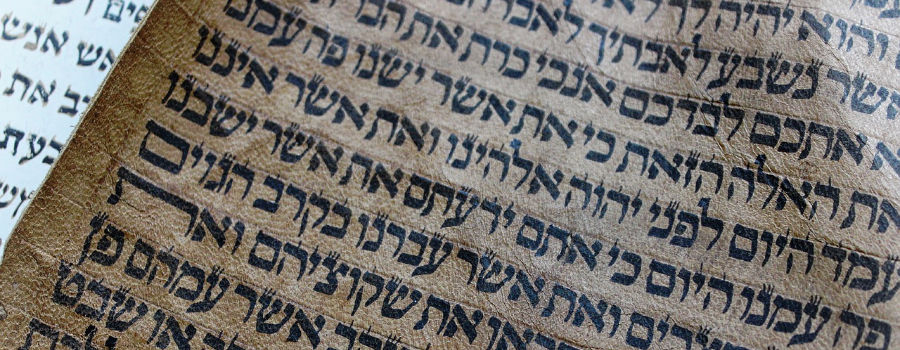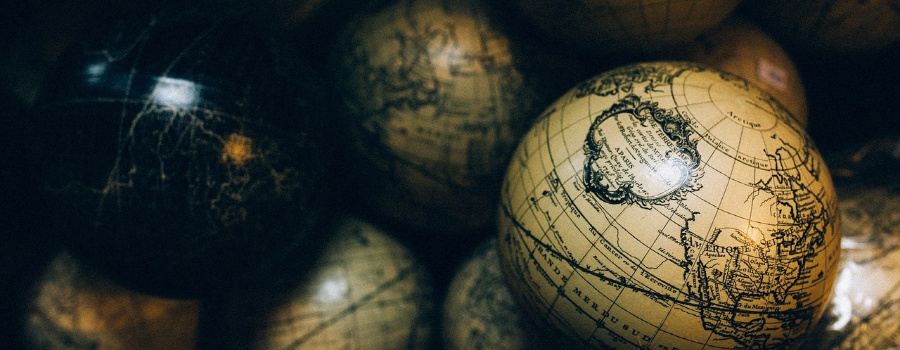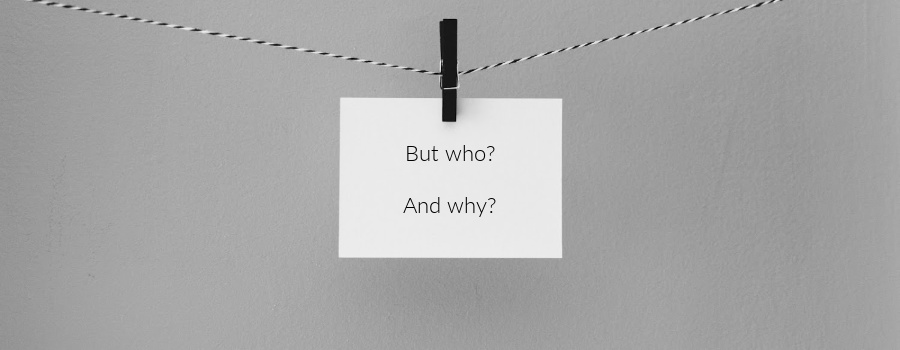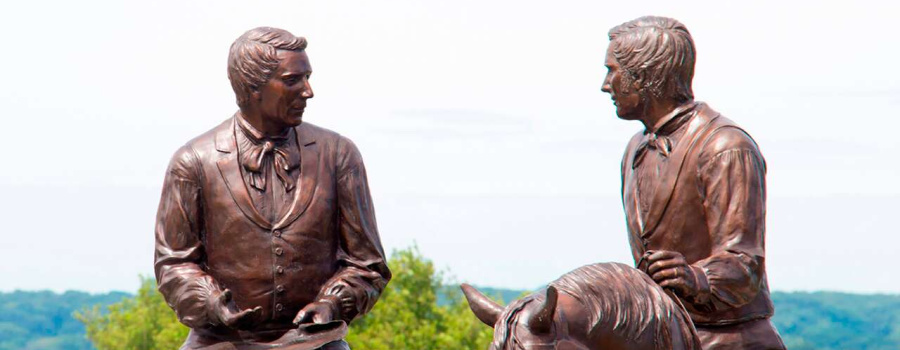The Unbelievable Skill Set of a Fraudulent Joseph Smith
Ah, the 1800s. Back when the air was clear and cholera patients were treated with tobacco enemas. Good times. But I digress. This article is about Joseph Smith. An angel once said Joseph’s name “should be had for and evil among all nations, kindreds, and tongues, or that it should be both good and evil spoken of among all people.” And it’s true. To some people, Joseph Smith is a prophet of God. To others, he’s something else entirely. But … if not a prophet, what exactly is he?
Joseph’s antagonists have come up with a variety of naturalistic means by which Joseph could have accomplished his many feats. This article explores some of the things Joseph would have had to have known and/or done in order to pull off what would easily be considered one of the greatest hoaxes of all time.
Joseph the Metallurgist
Either Joseph Smith had the gold-colored plates or he didn’t. The eleven official witnesses of The Book of Mormon all testified throughout their lives (even after some left the Church) that they had seen the plates. The three witnesses testified that they “beheld and saw the plates, and the engravings thereon….” The other eight witnesses said “as many of the leaves as the said Smith has translated we did handle with our hands; and we also saw the engravings thereon….” In addition to these official witnesses, there were many unofficial witnesses to the plates. You can read about their experiences here.
The point is—unless official and unofficial witnesses were duped or co-conspirators with Joseph, some kind of plates existed. The question is: How do they exist? Where did they come from? Well, to the critic, it’s certainly not possible that Joseph removed them from the ground at the behest of an angel. So, he must have made them. Who knew Joseph, the farmer, had such an interest and apparently secret skill in metallurgy?
Couldn’t he have just hired someone to fabricate the plates for him? I suppose so, though it would have been quite the risk. One easy comment from the local blacksmith (“Yeah, he hired me to make them”) and the case is closed. But such a confession does not exist. Besides, where would Joseph come up with the money to fund such a project? In 1859 Martin Harris said,
While at Mr. Smith’s I hefted the plates, and I knew from the heft that they were lead or gold, and I knew that Joseph had not credit enough to buy so much lead.
But maybe there was an anonymous metallurgist co-conspirator friend of Joseph Smith in the small town of Palmyra (population in 1825 was well under five thousand people) that volunteered his services for free that we have absolutely no record of! The old ‘man-behind-the-curtain’ conspiracy. Well, I suppose there’s no way to disprove that one, nor do I think it’s worth the effort to try.
Joseph the Hypnotist
Lest we forget, the three witnesses claimed an angel appeared before them and showed them the golden plates. Again, our “naturalistic” options are that they were all co-conspirators, or they were duped. One of the (somehow) popular “they were duped” theories is that Joseph Smith was a skilled hypnotist. He lulled them into a trance and, in their altered state of mind, convinced them that they were seeing an angel (or even the non-existent plates themselves). Impressive.
What’s even more impressive is Joseph’s ability to cause people to hallucinate even when not in the presence of his subject. For example, one unofficial witness of the plates had a similar angelic experience before the Testimony of the Three Witnesses existed. Of his mother, Mary’s, experience, David Whitmer related:
…my mother was going to milk the cows, when she was met out near the yard by the same old man (judging by her description of him) who said to her, ‘You have been very faithful and diligent in your labors, but you are tired because of the increase of your toil, it is proper therefore that you should receive a witness that your faith may be strengthened.’ Thereupon he showed her the plates.
[The personage] turned the plates over, leaf after leaf, and also showed her the engravings upon them; after which he told her to be patient and faithful in bearing her burden a little longer, promising that if she would do so, she should be blessed; and her reward would be sure, if she proved faithful to the end. The personage then suddenly vanished with the plates, and where he went, she could not tell.
And let’s not forget the miraculous experiences that large groups of people all had at the same time, both in and out of Joseph’s presence. Either Joseph was the most accomplished hypnotist of all time or for some reason everywhere he went turned into the capitol of Schizophrenia, USA.
Joseph the guy with a photographic memory
Joseph is often mocked for having “translated” The Book of Mormon by reading from a seer stone with his face stuck in a hat. This method is corroborated by one of Joseph’s scribes: his wife, Emma.
I frequently wrote day after day, often sitting at the table close by him, he sitting with his face buried in his hat, with the stone in it, and dictating hour after hour with nothing between us. …He had neither manuscript nor book to read from. …If he had had anything of the kind he could not have concealed it from me.
Again, here are our naturalistic options: Emma was a co-conspirator, or Emma was duped. If Emma was a co-conspirator (along with every other scribe or witness to the translation), then the leading theory is that Joseph, undoubtedly with an inhuman amount of human help, had somehow concocted a pre-written manuscript from which he dictated. This, however, leads to a never-ending list of questions and complications that we’ll lightly touch upon at the end of this article.
All evidence points to the fact that he dictated this text to a scribe while peering into a hat with no reference material. Assuming the scribes were duped, even if The Book of Mormon was Joseph’s own invention, how did he manage to dictate it with his face in a hat? The only option we have is that Joseph simply committed his entire pre-written manuscript (or at least large chunks of it) to memory before expertly reciting page after page to his scribes.
Oddly, evidence of a photographic memory is suspiciously absent from the historical record. Even one vocal antagonist of the Church (Paul A. Douglas) wrote, “In case some wonder, Joseph did not exhibit characteristics associated with photographic memory, or edetitic imagery. This is an extremely rare disorder” (Interrogatory No. 7 of A Letter to an Apostle).
Other explanations I’ve heard thrown around are that Joseph was inspired by an evil spirit or used dark magic to produce the dictation. So, if the scribes were not co-conspirators, Joseph either had a photographic memory, was a spirit medium, or a wizard.
Joseph the Linguist
Dozens of elements of the ancient Hebrew language appear in the text of The Book of Mormon. If/and conditionals, chiasmus, construct state, simile curses, conjunction frequency, ancient Bedouin desert poetry, the list goes on and on.
Some critics suggest Joseph could have easily gleaned these linguistic elements from his King James Version of the Bible. I suppose that’s possible for some. As a gauge for how likely that may be I’d suggest you look back on your own study and experience with the Bible and ask yourself how many elements of Hebrew style and structure you’ve just picked up on?
Clearly it’s unlikely, but possible, that Joseph could have picked a few things up from his Bible, but that doesn’t explain away everything that needs to be explained. So, we have to ask ourselves, where did he get the rest? Some suggest local libraries may be the place to look. And surely a number of religious and linguistic books existed at the time. However, what Joseph may or may not have accessed is completely speculative. We do know that, according to his mother, Joseph “seemed much less inclined to the perusal of books than any of the rest of our children, but far more given to meditation and deep study.”
But even if Joseph somehow learned about all of these linguistic intricacies through the literature available to him, it’s interesting that he never called attention to any of them, lauding them as proof of his “inspired translation.” In fact, he deemed some Hebraisms as grammatical errors, editing them out of early editions of The Book of Mormon. What a strange thing to do after so much apparent in-depth study.
Joseph the Geographer
I’ll let the video below do most of the talking on this subject. But, in summary, The Book of Mormon exemplifies an intimate knowledge of Old-World geography. For example, the elevation of Jerusalem relative to surrounding lands and key locations (and characteristics of those locations) along the Red Sea and Arabian Peninsula. At least one location found in The Book of Mormon simply cannot be found on any maps of Joseph’s time. He was either a lucky guesser or had access to geographic sources that, in some cases, were well beyond their time.
Joseph the Geologist
Check out 3 Nephi 8:21-23,
And there could be no light, because of the darkness, neither candles, neither torches; neither could there be fire kindled with their fine and exceedingly dry wood, so that there could not be any light at all; And there was not any light seen, neither fire, nor glimmer, neither the sun, nor the moon, nor the stars, for so great were the mists of darkness which were upon the face of the land. And it came to pass that it did last for the space of three days that there was no light seen.
Wow. The mists of darkness were so thick that they couldn’t even spark a fire using their “fine and exceedingly dry wood.” The scripture doesn’t necessarily claim this was a supernatural event. The “mists of darkness” were the cause. Have you ever heard of such a geological phenomenon? I sure haven’t. Well, hadn’t … now I have. It turns out it’s actually a thing. Volcanic ash could easily explain the thick darkness, but what about the Nephites’ inability to light a fire? According to geophysics professor Alvin K. Benson,
In several modern cases, volcanic gases have collected in low spots after an eruption, killing people, animals, and vegetation. The fate of a particular city would depend on its location relative to fault lines and volcanoes, and upon the direction of the wind carrying volcanic ash and gases. In the regions of the surviving Nephites, the concentration of volcanic gases may have been sufficient to prevent the ignition of fires but not high enough to suffocate people. Because most volcanic gases are heavier than air, they tend to hug the ground; hence, at ground level, concentrations could have been high enough to prevent ignition of the Nephites’ dry tinder.
Once again, our naturalistic options are that either Joseph got incredibly lucky, or he had an intimate understanding of extremely rare geologic phenomena.
Joseph the Archer
This section is just based on a minor detail in The Book of Mormon, but I find it fascinating. In 1 Nephi 16 we read,
And it came to pass that we did travel for the space of many days, food by the way, with our bows and our arrows and our stones and our slings.
… And it came to pass that as I, Nephi, went forth to slay food, behold, I did break my bow, which was made of fine
… And it came to pass that I, Nephi, did out of wood a bow, and out of a straight stick, an arrow; wherefore, I did arm myself with a bow and an arrow, with a sling and with stones.
The question is, why did Nephi make a new arrow if he already had arrows from his old bow? The answer is simple, but telling. Here’s what researcher William Hamblin said about it back in 1992:
Nephi’s steel bow likely used heavier, stiffer arrows than his simply fashioned wooden bow could handle. Nephi was physically large (see 1 Nephi 2:16; 4:31), and he would have had little reason to use a bow made from metal if he did not have considerable strength. The arrows to match the steel bow used by such a man would undoubtedly have been quite heavy in order for them to be of adequate stiffness. One experienced archer reports, ‘The arrows from the steel bow when shot from the wooden bow would be like shooting telephone poles.’ Hence, it is accurate that Nephi should mention, in one and the same breath, the fact that he made an arrow as well as a bow. Bow wood and arrow wood from the same tree or area could be matched as well.
One doubts that such information was known to Joseph Smith or to many, if any, of his contemporaries. Archery, as a means of self‐defense or as a serious method of hunting or warfare, went out of vogue among Europeans many years before the time of Joseph Smith. On the other hand, archery as a sport did not emerge until the latter half of the nineteenth century.
Despite zero evidence (that I’m aware of) that Joseph ever had an interest in archery, from an antagonistic point of view, Joseph had a surprisingly detailed understanding of the practice.
Joseph the Time Traveler?
This one is really interesting. There are several portions of Joseph Smith’s Book of Abraham and Book of Moses translations that contain details about Abraham and the prophet Enoch that were simply unavailable (at least in English) in Joseph’s time. Manuscripts of The Apocalypse (or Testament) of Abraham and several Enochic writings have come forth since Joseph’s time that corroborate what Joseph wrote about them.
You can read about specific Abrahamic examples in this article: 5 Faith-Affirming Similarities Between The Book of Abraham and The Apocalypse of Abraham
You can find an excellent synopsis of Enochic examples in these videos: Joseph Smith’s Enoch Part 1 / Joseph Smith’s Enoch Part 2. But as a quick summary/sample:
- Turning a river from its course is mentioned in The Book of Moses in reference to Enoch, and in Enochic manuscripts discovered after The Book of Moses was written. Nowhere else is a river turned from its course through divine power.
- The Book of Moses mentions the name of Mahijah and, strangely, the variation Mahujah. The Bible only mentions Mahijah. Later Enochic literature mentions Mahijah and Mahujah.
- Enoch is associated with books of remembrance in both The Book of Moses and later Enochic literature, but nowhere else.
- In the Enoch chapters of The Book of Moses, God weeps. In later Enochic literature, God also weeps.
Some critics suggest Joseph was either just a really lucky guesser, or he somehow must have had access to some kind of obscure rare literature that gave him each of these insights. Evidence suggesting the latter option is dismal, and the idea that Joseph was this lucky is as unbelievable to me as the veracity of Joseph’s prophetic calling is to the critics.
OK OK OK but what if Joseph DID have co-conspirators?
Maybe this conspiracy runs much deeper and Joseph did indeed have a vast network of associates willing to give their lives to his fraud. Well, what kind of can of worms does that idea open up? Here are just a few questions that would need to be answered:
- Who was in on it and who wasn’t? What roles did they play?
- Was Joseph’s own family part of the fraud?
- If the family was in on it, why did Joseph shed tears of joy when his father was baptized into the Church, both knowing it was all a sham?
- Why would Alvin Smith’s (Joseph’s older brother) final words to Joseph be in support of a fraud? “I want you to be a good boy and do everything that lays in your power to obtain the records.”
- If the witnesses were in on it, why did they defend their testimonies to the grave, even after having a falling out with Joseph and leaving the Church? Oliver Cowdery testified of The Book of Mormon on his death bed.
- How do we explain the visions and witnesses of random people like Mary Whitmer, Alva Beman, Zera Pulsipher, and countless others?
- In Joseph’s final hours before his martyrdom (which he knew was coming), why did he read and take comfort from a fraudulent book?
- When did Joseph compose his secret Book of Mormon manuscript? What happened to it? Are there any associates that fit the timeline that could have adequately supplied Joseph with the expertise necessary to write the book?
- If the scribes were all in on it, why fabricate the story about the seer stones at all? Wouldn’t it have just been easier to say to the public, “This is a book God revealed directly to my mind. Here it is.”
The questions go on and on. More often than not, attempting to answer one just breeds more. It’s no surprise that critics can’t agree on just how The Book of Mormon came into existence. If the conspiracy runs deeper than Joseph, things get even more complicated, and critics become even more speculative with their claims.
Moral of the story
Latter-day Saints are often accused of bending over backwards, performing “mental gymnastics” to justify Joseph Smith’s prophetic calling. But maybe debunking his prophetic calling is what really necessitates the gymnastics. Either Joseph and his network of resources and plain-clothed cohorts is unbelievably vast (especially for a farm boy in the 1820s), or Joseph is a knowledgeable archer, metallurgist, hypnotist, linguist, geographer, and time traveler with a photographic memory. And that’s just a sample.
Or, there’s the alternative: That Joseph was a prophet of God, and The Book of Mormon came forth exactly how he said it did.



